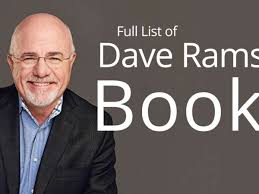Retirement is a significant milestone that requires careful planning and strategic decision-making. To ensure a financially secure future, it’s crucial to implement effective retirement planning tips that can help maximize your savings. In this comprehensive guide, we’ll explore various strategies and best practices to help you achieve your retirement goals.
Skale Money Key Takeaways
- Start saving for retirement as early as possible to take advantage of compound interest and maximize your savings growth over time.
- Utilize tax-advantaged accounts like 401(k)s, IRAs, and HSAs to reduce your tax burden and boost your retirement planning efforts.
- Diversify your investments across different asset classes to mitigate risk and potentially enhance returns through strategic retirement investment strategies.
- Explore strategies like the backdoor Roth IRA, claiming retirement savings tax credits, and optimizing your retirement location to maximize your savings and minimize costs.
- Regularly review and adjust your retirement planning tips and strategies as your circumstances and goals change to stay on track for a financially secure retirement.
Table of Contents
Importance of Planning for Your Retirement
Why Start Early?
One of the most important retirement planning tips is to start saving as early as possible. Time is a powerful ally when it comes to retirement savings, as it allows for the compounding effect to work its magic. By starting early, even modest contributions can grow into a substantial nest egg over the years.
The Power of Compound Interest
Compound interest is the interest earned not only on the principal amount but also on the accumulated interest from previous periods. This compounding effect can dramatically increase your retirement savings over time. The earlier you start saving, the more you can leverage the power of compound interest to your advantage.
How Much Money Should I Save for Retirement?
The 4% Rule
A widely recognized guideline for retirement savings is the 4% rule. This rule suggests that you can safely withdraw 4% of your retirement portfolio each year without running out of money during a typical retirement lasting 30 years. However, this rule is a starting point, and your specific retirement needs may vary.
Factors to Consider
Determining how much you should save for retirement involves considering various factors, including your desired retirement lifestyle, expected retirement age, estimated life expectancy, potential retirement healthcare costs, and other retirement income sources (e.g., Social Security, pensions).
To get a more accurate estimate, consider using free online retirement savings calculators for different ages that take into account your unique circumstances.
Tips for Retirement Planning
Photo by Marc Najera on Unsplash
Understand Your Retirement Goals
Before implementing any retirement planning tips, it’s essential to clearly define your retirement goals. What kind of lifestyle do you envision for yourself in retirement? Do you plan to travel extensively, pursue hobbies, or maintain a more modest lifestyle? Determining your desired retirement lifestyle and associated costs will help you set realistic savings targets.
Maximize Employer-Sponsored Plans
If your employer offers a retirement plan, such as a 401(k) or 403(b), it’s crucial to take full advantage of it. These plans often come with tax advantages and may include employer matching contributions, which can significantly boost your retirement savings.
Diversify Your Investments
Diversifying your investments across different asset classes (e.g., stocks, bonds, real estate) is a key retirement planning tip that can help mitigate risk and potentially enhance returns. Consider working with a financial advisor to develop an appropriate retirement investment strategy based on your risk tolerance and time horizon.
Some common strategies include:
- Conservative portfolio: Emphasizes fixed-income investments and aims for capital preservation.
- Moderate portfolio: Balances growth and income with a mix of stocks and bonds.
- Aggressive portfolio: Focuses on growth by investing primarily in stocks.
Consider Tax-Advantaged Accounts
In addition to employer-sponsored plans, explore other tax-advantaged accounts like Individual Retirement Accounts (IRAs) and Health Savings Accounts (HSAs). These accounts can provide valuable tax benefits and help you save more for retirement while minimizing your retirement tax planning burden.
Early Retirement Planning Tips
Photo by Harli Marten on Unsplash
If you’re aiming for early retirement, these additional retirement planning tips can be particularly helpful:
Grab the 401(k) or 403(b) Company Match
If your employer offers a matching contribution to your 401(k) or 403(b) plan, make sure to contribute at least enough to receive the full match. This is essentially free money that can supercharge your retirement savings.
Claim Double Retirement Plan Contributions
For those who qualify, the “Saver’s Credit” allows you to claim double retirement plan contributions on your tax return, effectively reducing your taxable income and providing an additional incentive to save.
File for Uncle Sam’s Retirement Savings Credit
The Retirement Savings Contributions Credit, often referred to as the “Saver’s Credit,” is a tax credit available to eligible individuals who contribute to qualified retirement plans. This credit can provide a valuable boost to your retirement savings efforts.
Use the Backdoor Roth IRA to Increase Savings
If your income exceeds the limits for contributing to a Roth IRA, consider the “backdoor” strategy. This involves making a non-deductible contribution to a traditional IRA and then converting it to a Roth IRA, allowing you to enjoy the tax-free growth and withdrawal benefits of a Roth account.
Retire in the Right State
Choosing the right state to retire in can have a significant impact on your retirement savings and overall costs. Consider factors like state taxes, cost of living, and access to healthcare when deciding where to retire. Some states may be more tax-friendly for retirees, which can help stretch your retirement savings further.
The Health Savings Account (HSA)
If you have a high-deductible health plan, an HSA can be a powerful tool for retirement planning. HSA contributions are tax-deductible, and the funds can be withdrawn tax-free for qualified medical expenses, including those incurred in retirement. HSAs can also be invested, allowing you to potentially grow your retirement healthcare savings over time.
Self-Employed Retirement Savings
If you’re self-employed, options like Solo 401(k)s, Simplified Employee Pension (SEP) IRAs, and SIMPLE IRAs can provide valuable tax-advantaged ways to save for retirement. These plans offer higher contribution limits compared to traditional IRAs, allowing you to potentially save more for your retirement.
The Bottom Line
Implementing effective retirement planning tips is crucial for achieving a comfortable and secure retirement. By starting early, maximizing tax-advantaged accounts, diversifying your investments, and exploring strategies like the backdoor Roth IRA and HSAs, you can potentially maximize your savings and enjoy the retirement lifestyle you envision.
Remember, retirement planning is an ongoing process that requires regular review and adjustment as your circumstances and goals change over time. By staying proactive and following these retirement planning tips, you can increase your chances of achieving a financially secure retirement.
FAQs
What is the best retirement plan?
The best retirement plan depends on your individual circumstances, such as your income, employment status, and risk tolerance. Common options include 401(k)s, 403(b)s, IRAs (traditional and Roth), and employer-sponsored pension plans. It’s often beneficial to diversify your retirement savings across multiple accounts.
How much should I contribute to my retirement accounts?
The amount you should contribute to your retirement accounts depends on your retirement goals, age, and income. Many financial experts recommend contributing at least 10-15% of your pre-tax income to retirement accounts. However, the appropriate contribution rate can vary based on your specific situation.
When should I start saving for retirement?
It’s generally recommended to start saving for retirement as early as possible, ideally in your 20s or early 30s. The earlier you start, the more time your investments have to grow through compound interest, potentially resulting in a larger nest egg at retirement.
![]()




